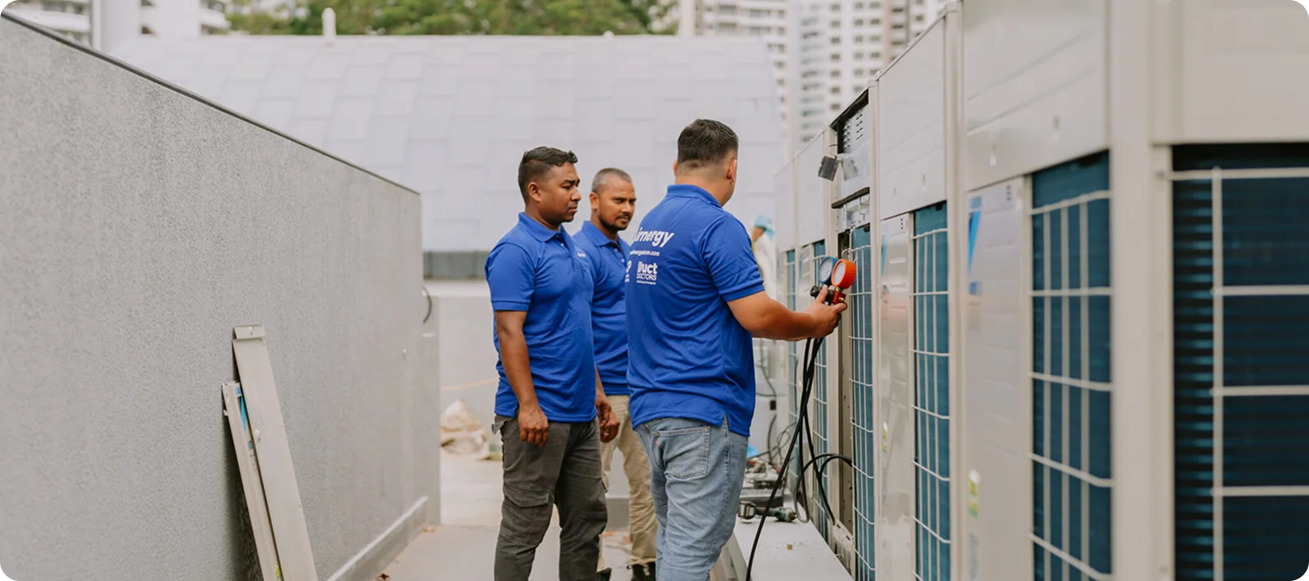
Singapore heat? Book your aircon servicing with confidence.

Singapore heat? Book your aircon servicing with confidence.
In simple terms, refrigerant is the special liquid/gas that runs through the coils of your air conditioner. It’s the stuff that actually absorbs the heat from inside your house and releases it outside. No refrigerant, no cooling. It’s that important.
But because it’s a sealed loop, the amount never should change. If the level drops, it’s escaped somewhere.
This is the most critical part to understand. A low refrigerant level is a symptom, not the cause. The cause is always a leak.
Causes of leaks can be very few:
Ignoring the leak and filling with gas is like putting water in a bucket with a hole. The water will only stay for some time; then, you will be back to square one, dry, out of pocket, and sweating.
A proper job by a licensed technician is a detailed process. It’s not just hooking up a can of gas. Here’s what you should expect:
You can buy DIY recharge kits at the hardware store. We strongly recommend you don’t.

Low refrigerant = a leak. Your system is sealed and shouldn’t lose gas.
Q: How often does my air conditioner need to be regassed?
A: It should never do so. Properly working units are never supposed to be topped up. When you find it has run low, it means it is leaking, and the leaks need to be repaired.
Q: What would be the chance for my refrigerant to be low?
A: The primary one is weak cooling effect. You can also observe icing on the unit, hear an unmistakable hissing sound or notice that suddenly your power bills go all the way up as the system struggles on.
Q: Is it expensive to fix a refrigerant leak?
A: It depends entirely on where the leak is. A simple fitting might be a quick fix. A leak in a coil is more involved. The only way to know is to have a pro find it first. We always provide a clear quote before any work begins
Constantly needing a "regas" is a sign your system is sick and needs proper attention. The proper refrigerant recharge and repair may cost more initially than just having a quick top-up, but it is the only solution to fix the problem and save you money down the line.
A healthy, sealed system will work efficiently, keeping your electricity bills low and your home comfortably cool for years.
If your air con is not cooling the way it used to, please do not ignore it nor choose that cheap dodgy top-up. Get it properly diagnosed.
And that’s where we can help. We’re Airnergy, and we’re passionate about keeping your homes cool and comfortable. Our licensed technicians don’t just carry gas; they carry the expertise to properly find and fix your leak for good. We’ll give you a straight answer and a fair quote to get your system running properly again.
Give us a buzz—we’d love to help you get your cool back.
 10 Signs Your Aircon Needs Maintenance Before It Breaks Down
10 Signs Your Aircon Needs Maintenance Before It Breaks Down  How Dirty Aircon Filters Affect Your Health and Indoor Air Quality
How Dirty Aircon Filters Affect Your Health and Indoor Air Quality  Why Timely AC Cleaning in Singapore Can Save You Money
Why Timely AC Cleaning in Singapore Can Save You Money  Why Quarterly Aircon Maintenance is a Must for Every Singapore Home
Why Quarterly Aircon Maintenance is a Must for Every Singapore Home  Quarterly Aircon Servicing in Singapore: What Every Homeowner Should Know
Quarterly Aircon Servicing in Singapore: What Every Homeowner Should Know 